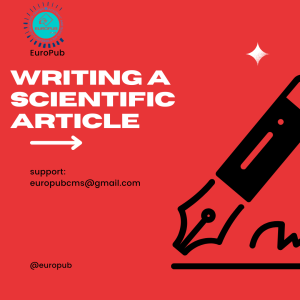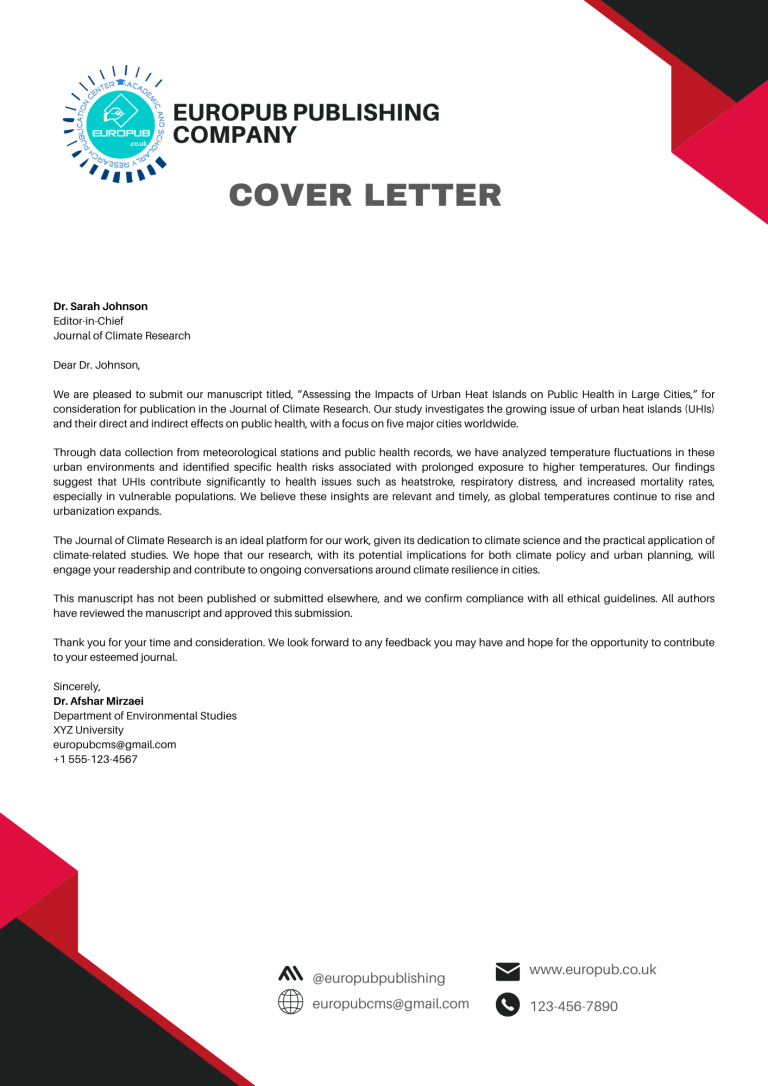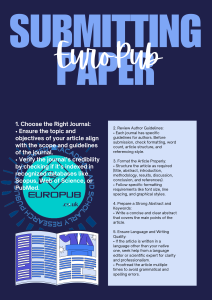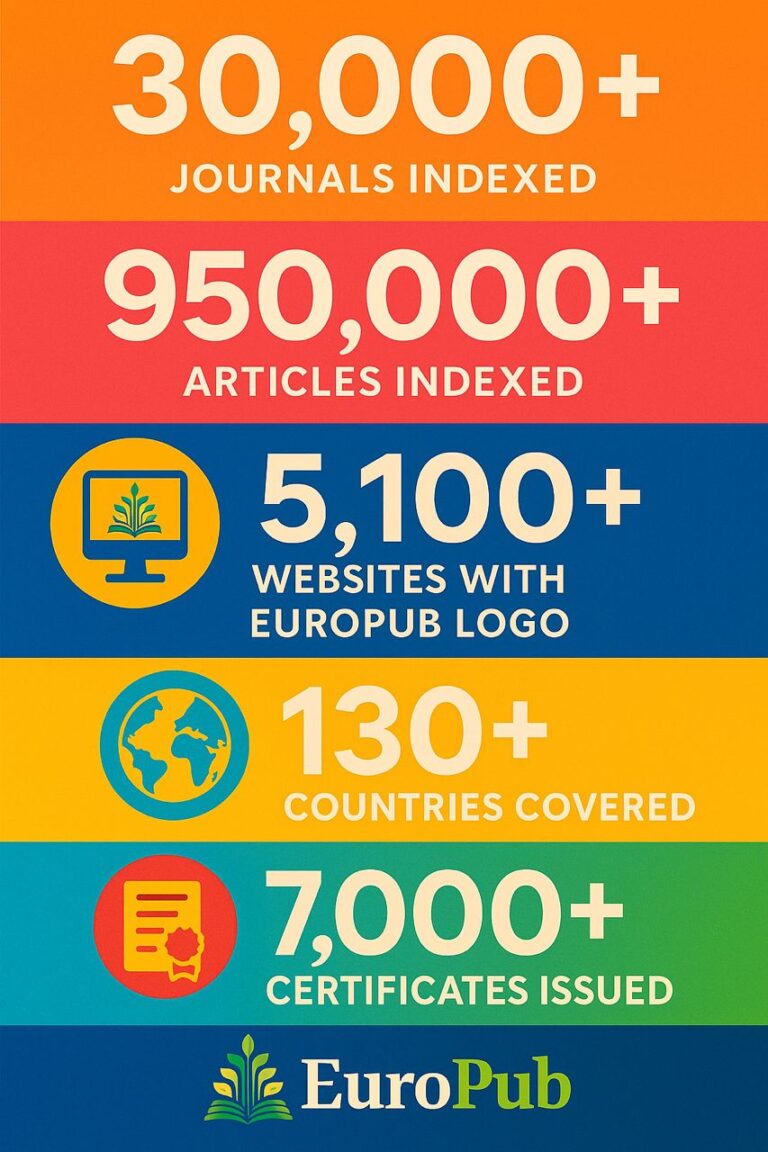Here’s a comprehensive and detailed guide on how to write a scientific article, including specific steps, examples, and nuances for each section:

1. Choosing a Topic and Data Collection
Choosing a topic is one of the most crucial steps. It should be unique, novel, and manageable for research.
• Example: Instead of a broad topic like “The Impact of Exercise on Health,” you could narrow it down to “The Effect of Regular Aerobic Exercise on Reducing Anxiety and Stress in Adults Aged 30 to 45.”
Actions:
• Literature Review: Start by reviewing credible sources to study articles in the relevant field. Identify research gaps and less-explored topics.
• Define Objectives: Once you select a topic, clarify your objectives; for instance, are you investigating an effect, or proposing a new model?
2. Designing Research Questions and Hypotheses
• Research Questions: Develop primary and secondary questions that will guide your research.
• Example: “Does regular aerobic exercise lead to reduced anxiety in adults?”
• Hypotheses: Clearly state your hypotheses based on the scientific background.
• Example: “Regular aerobic exercise can reduce anxiety levels in adults.”
3. Overall Structure of the Article
Main Components of an Article:
• Title: Should be concise, precise, and descriptive of the topic.
• Example: “Investigating the Effects of Aerobic Exercise on Stress and Anxiety Reduction in Adults.”
• Abstract: A brief summary of the article, including the objective, methods, results, and conclusions.
• Example: “This study investigates the effects of aerobic exercise on reducing stress and anxiety in adults…”
• Keywords: Select 5 to 7 keywords that accurately represent your article.
4. Introduction
Actions and Example:
• Provide Background: Start by discussing the importance of the topic and support your statements with reputable articles.
• Example: “Research has shown that aerobic exercise can improve mental health, particularly in reducing anxiety and stress.”
• State the Problem: Explain the challenge or research gap that necessitates your study.
• Example: “Given the rising mental health issues, particularly anxiety and stress, there is a need for studies examining the impact of exercise on these problems.”
• Research Aim and Questions: Clearly outline your primary aim and research questions.
5. Methodology
The methodology is a key part of the article, as the validity of the research is assessed based on how it was conducted.
Actions and Example:
• Type of Research: Specify the type of study (experimental, descriptive, survey).
• Example: “This study is cross-sectional and utilizes standardized questionnaires.”
• Target Population and Sampling: Indicate the target population and the sampling method used.
• Example: “The target population consists of 100 adults aged 30 to 45 who engage in regular exercise.”
• Data Collection Tools: Mention the tools used for data collection, such as questionnaires, interviews, or tests.
• Example: “The Beck Anxiety Inventory and Perceived Stress Scale were utilized.”
• Data Analysis Methods: Specify the statistical methods used for analysis.
• Example: “Data were analyzed using T-tests and SPSS software.”
6. Results
In this section, findings are presented clearly and comprehensively.
Actions and Example:
• Present Tables and Figures: Data should be displayed in readable tables and charts.
• Example: “The average anxiety scores of participants before and after the 8-week exercise program indicated a significant reduction.”
• Explain and Interpret Results: Describe each table or figure and highlight the implications of the findings.
• Example: “The analysis shows that regular exercise significantly decreases anxiety levels in the sample.”
7. Discussion and Conclusion
Actions and Example:
• Compare with Previous Research: Compare your results with similar studies.
• Example: “Our findings align with the study by Smith et al. (2018), which demonstrated that aerobic exercise reduces anxiety.”
• Interpret Findings: Provide explanations for the observed results.
• Example: “Aerobic exercise may reduce anxiety through increased endorphin levels.”
• Limitations and Suggestions: Mention the limitations of your study and propose suggestions for future research.
• Example: “One limitation of this study was the small sample size; future research should include a larger sample.”
8. References
For citations and references, adhere to the journal’s writing style. Common styles include APA or IEEE.
Actions and Example:
• Cite Primary Sources: Sources should be reputable and up-to-date.
• Example: “Smith, J., & Doe, A. (2018). Effects of Aerobic Exercise on Anxiety and Stress Levels. Journal of Psychology, 34(3), 245-250.”
9. Editing and Reviewing
Actions:
• Correct Language and Writing: Review the article for spelling, grammatical, and structural errors.
• Check Coherence: Ensure the connection between sentences and paragraphs is smooth and logical.
• Scientific Review: If possible, ask another expert or mentor to review the article and provide feedback.
10. Final Notes
• Scientific Integrity: Always present accurate information without manipulation.
• Avoid Plagiarism: Properly quote and reference any materials used from other sources.
By following these steps, you can create a scientifically sound article that meets rigorous standards and increases your chances of acceptance in scientific journals.
If you need complete guidance, please via the email below (europubcms@gmail.com) and include “writing a scientific article” in the subject line. Our team will respond to you within 24 hours.
Let me know if you need any adjustments!






